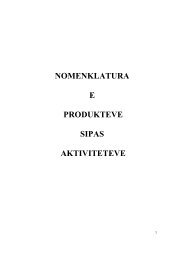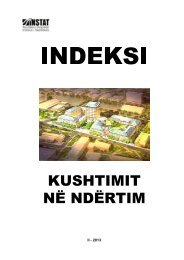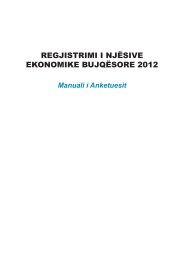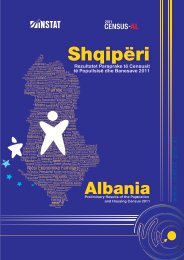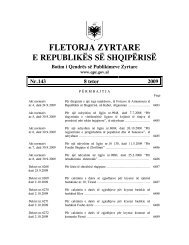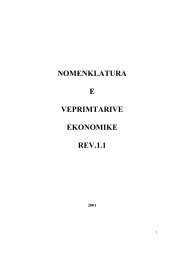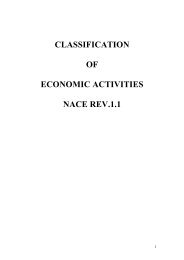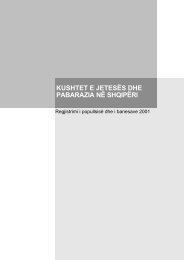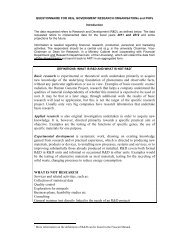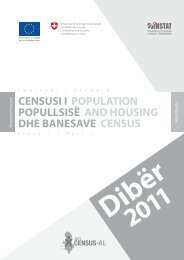Description of methods and sources for Albania - INSTAT
Description of methods and sources for Albania - INSTAT
Description of methods and sources for Albania - INSTAT
- No tags were found...
You also want an ePaper? Increase the reach of your titles
YUMPU automatically turns print PDFs into web optimized ePapers that Google loves.
IPA 2009 Multi-beneficiary StatisticalCooperation ProgrammeThe direct approach will <strong>of</strong>ten give better results if the component series showsimilar seasonal patterns. At the most detailed level, the irregular factor may belargely compared with the seasonal factor <strong>and</strong> there<strong>for</strong>e may make it difficult toper<strong>for</strong>m a proper seasonal adjustment. In a small country such as <strong>Albania</strong>, irregularevents can have a strong impact on particular data. However, if the component seriesshow the same seasonal pattern, aggregation <strong>of</strong>ten reduces the impact <strong>of</strong> the irregularfactors in the component series. This is particularly relevant <strong>for</strong> <strong>Albania</strong>, where manyeconomic series are affected by seasonal fluctuations in the primary industries.“<strong>INSTAT</strong>” institute has decided to apply the direct seasonal adjustment method,because in countries like <strong>Albania</strong> it is better to work based on an aggregate level.This happens because the economy is changing at a rapid pace.To eliminate the seasonality effect, specific s<strong>of</strong>tware “Demetra” is used, which isbased on some statistical tests like X 12 ARIMA, Tramo – seats, etc.A numerical example is given in Annex I, Tab I.2.18.2.4 Chain linking techniqueQuarterly accounts have to be both time consistent with the annual accounts (<strong>for</strong>example the sum <strong>of</strong> quarterly values <strong>of</strong> the GDP must be equal to the annual value <strong>of</strong>GDP) <strong>and</strong> respect the accounting identities (<strong>for</strong> example, the sum <strong>of</strong> quarterly values<strong>of</strong> the GDP expenditure components should be equal to the corresponding quarterlyvalue <strong>of</strong> GDP).Time consistency is a fundamentally univariate problem since it involves only onevariable, albeit at two frequencies (annual <strong>and</strong> quarterly). Accounting coherence <strong>and</strong>time consistency combined exhibit a multivariate dimension, since they involveseveral variables linked by a contemporaneous constraint (in the case above, this isquarterly GDP which "constrains" the sum <strong>of</strong> the quarterly component values), witheach <strong>of</strong> the variables subject to their own univariate temporal constraint.In the <strong>Albania</strong>n case, at the detailed level the series are consistent in current prices<strong>and</strong> in the base year prices. <strong>INSTAT</strong> presented differently the annual nationalaccounts <strong>and</strong> quarterly national accounts volume measures, creating some confusions<strong>for</strong> non-experienced users. There<strong>for</strong>e one major improvement was developing amethodology <strong>for</strong> a chain volume series <strong>of</strong> QNA <strong>and</strong> to present the quarterly accountsin the previous year’s prices in order to be consistent with the annual accounts.When annual re-weighting is done two successive years have to be linked by usingone <strong>of</strong> the following techniques:annual overlap: the average annual prices <strong>of</strong> the previous year are used as weights<strong>for</strong> each <strong>of</strong> the quarters in the current year, with the linking factors being derivedfrom the annual data;166/236



